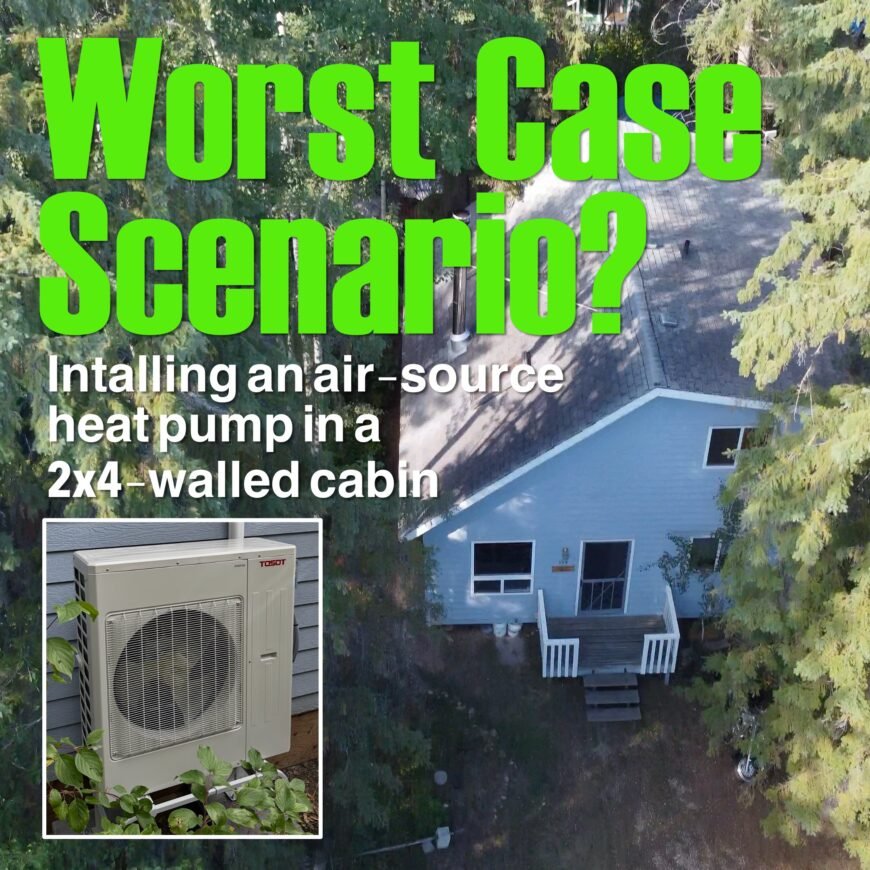By David Dodge, GreenEnergyFutures.ca
We spent the winter in our 925-square-foot cabin at Seba Beach which was only heated by an air-tight wood stove.
Normally the cabin is shut down for the winter and the water system is turned off and drained. We have come out in the winter when it’s -30 Celsius and the wood stove can easily heat the cabin.
But spending the entire winter there was a very different idea and untested.
We built two cabins in the early 1990s. Armed with a $3.99 framing hammer from Beaver Lumber, a portable table saw and a circular saw we built two cabins on our own.
All I had for reference were a few carpentry books and the guy at the lumber desk at Home Building Supplies who sold us the two cabin kits. There were no YouTube videos!
We learned framing, finishing, drywalling, plumbing and how to wire the homes.
It took one entire summer to frame each cabin to lock up and two to three years more to finish them inside in our spare time.
We have only one regret.
Back in the early 1990s the building code still allowed you to build using 2×4 construction and being somewhat naive I followed the code. Building at least 2×6 walls would have made a huge difference when transitioning from a seasonal cottage to a year-round living.
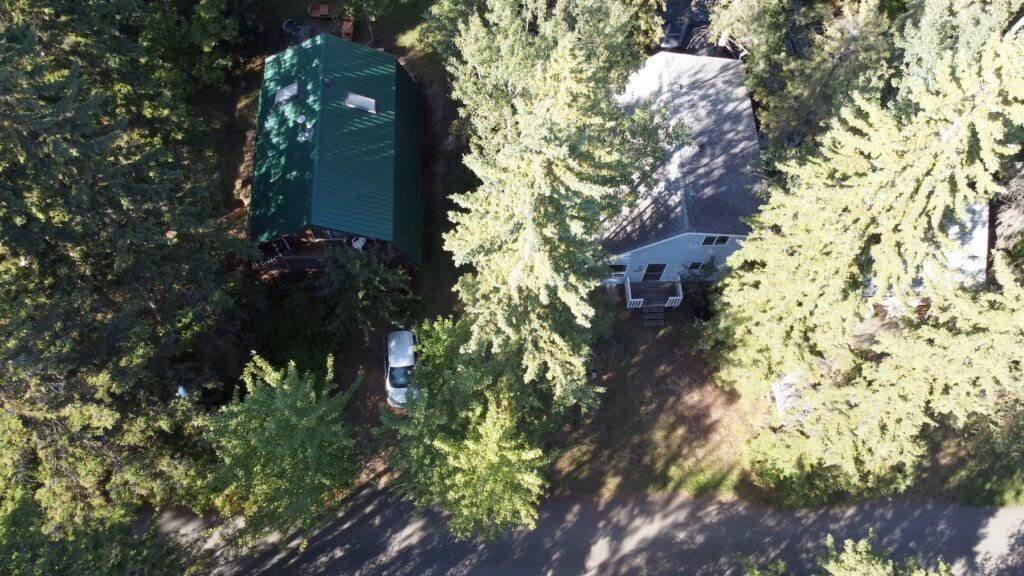
One cabin was built for my Mother who passed away 24 years ago. It was a barn-shaped, 1,000-square-foot cabin with a grade beam foundation sitting on the ground. The foundation was lightly insulated with EPS.
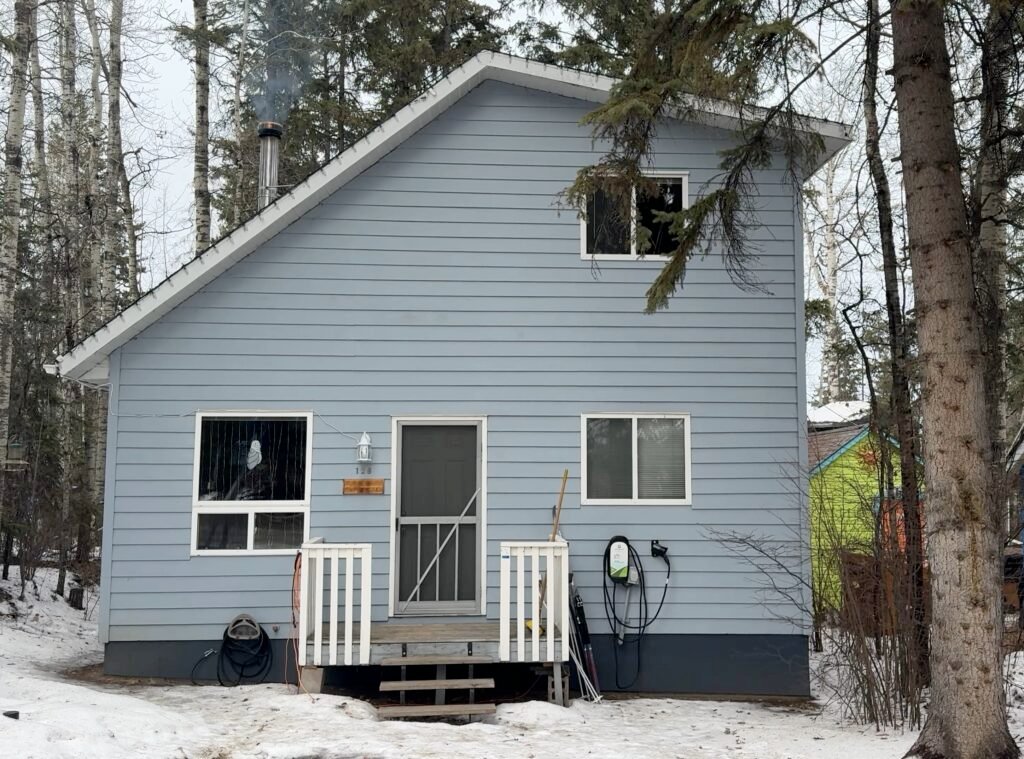
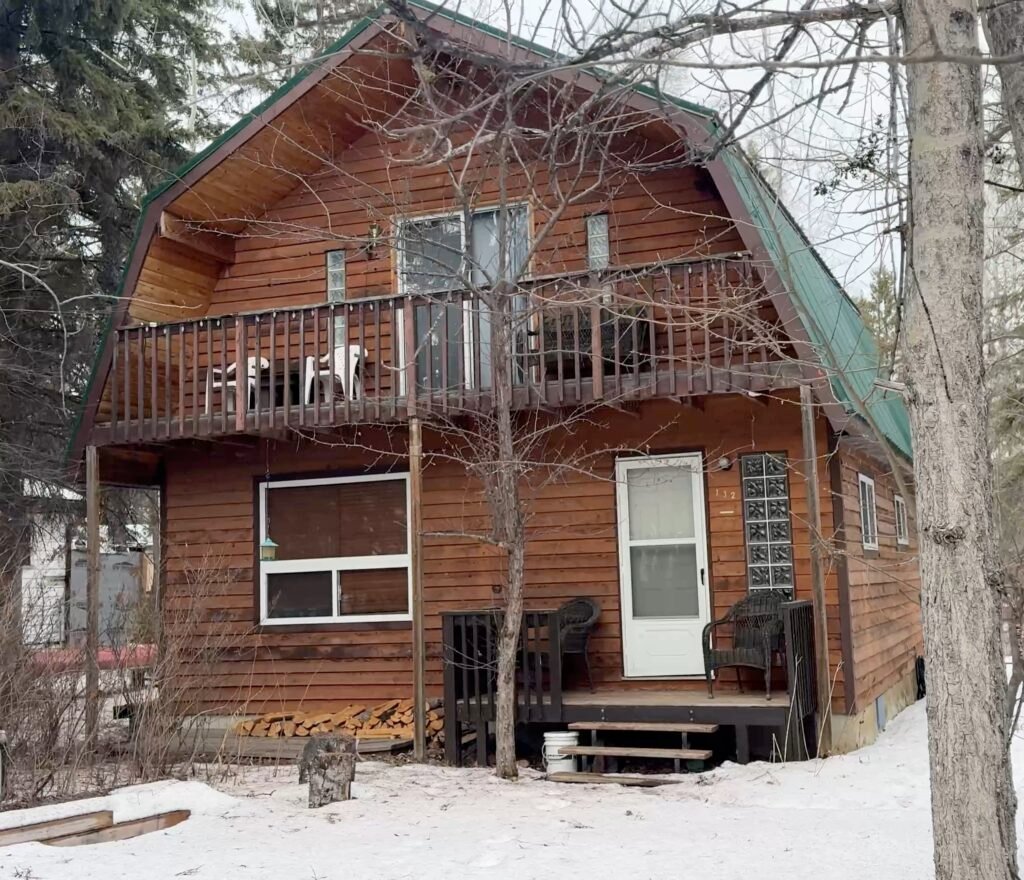
Worst case scenario for a heat pump?
The second cabin is ours. It’s a story and a half with a cathedral ceiling. One year later the building inspector wouldn’t let us build using the grade beam, so we had to drill a dozen pilings deep into the ground for the second cabin which means it had no foundation wall and air could flow freely beneath the uninsulated floors.
We chose a plan with a cathedral ceiling so we could locate our airtight wood stove in the middle of the main floor and the heat would reach all rooms of the cabin without ducting.
When we decided to overwinter in the cabin we moved into the barn-shaped cabin because the crawl space was closed in and lightly insulated.
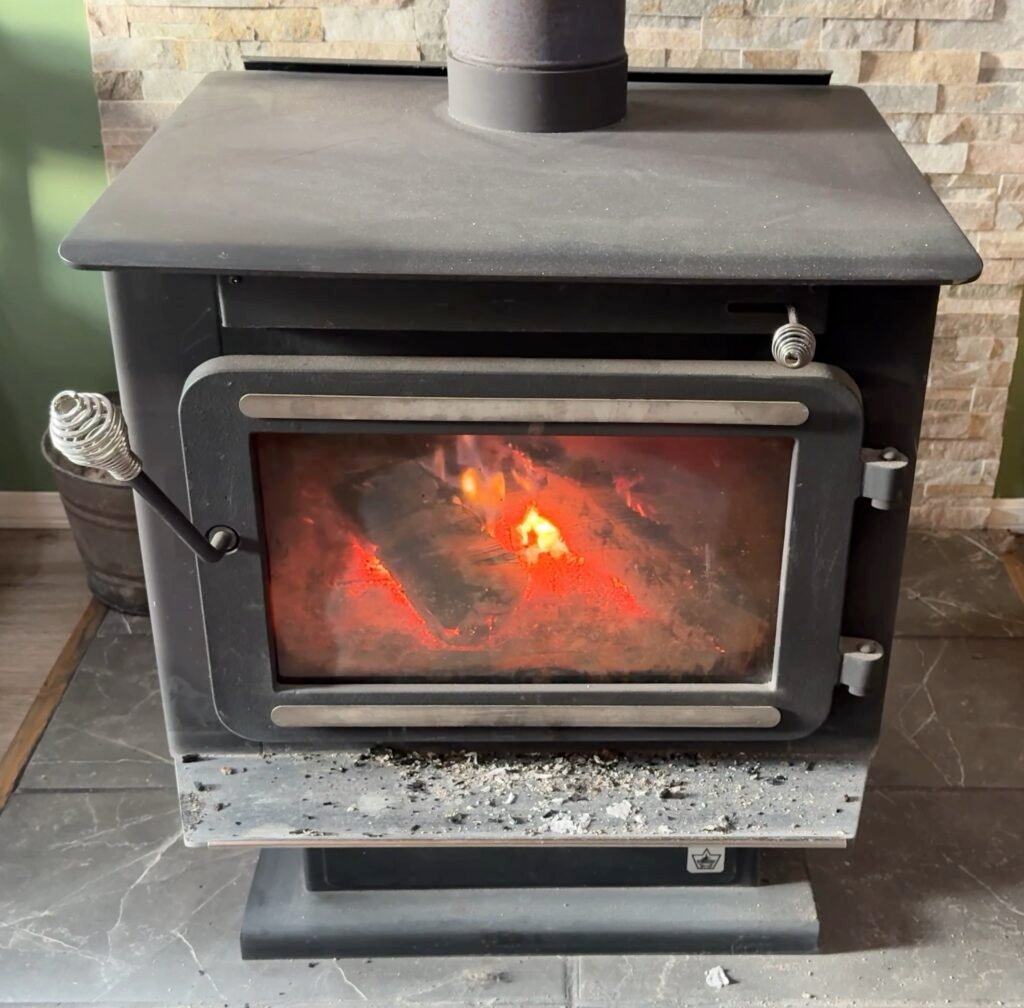
It was very romantic to live in a cabin with wood heat, but you can’t leave for more than a day or so in the depth of winter because the fire needs tending 24-7.
When it came time for a second winter we knew we needed a new plan.
At Green Energy Futures we have done dozens of stories on heat pumps, geothermal systems and super energy-efficient homes.
We wondered what we could do on a budget to improve the cabin and heat it with an air-source heat pump.
To be clear, this is the worst-case scenario for a heat pump.
Most experts say to deal with the envelope first, then look at a heat pump once you have reduced the demand heat load of your home.
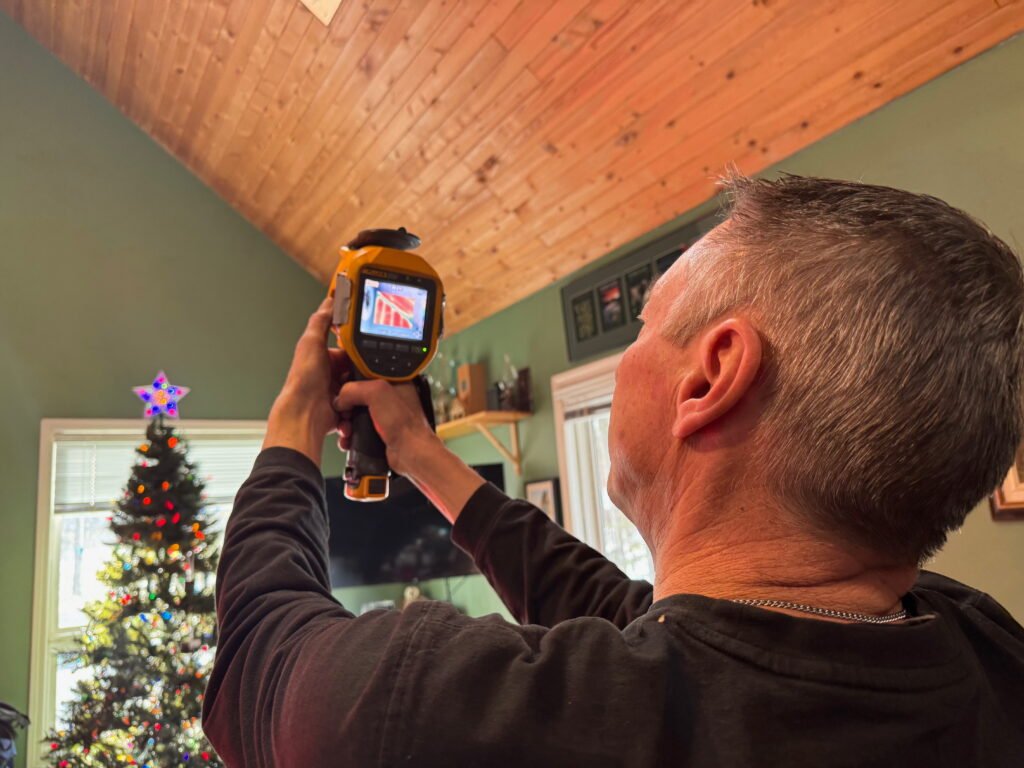
It begins with an energy audit
To begin our journey we hired Len Koenig of Pure Energy, a seasoned energy auditor who came highly recommended.
I interviewed Len before hiring him to ensure he was at least sympathetic to our goals. The energy audit is the single most important thing you can do to ensure a successful project, especially when you are dealing with new and innovative technologies such as air source heat pumps.

Len came to our home and took stock of just about everything in our cabin including insulation values, mechanical systems, windows, doors and much more.
Then he did the infamous blower door test to determine how much air leakage your home has. He found our cabin had 4.76 air changes per hour. That’s a lot of air to reheat in the depths of winter.
Then he took dozens of images with his infrared camera to find where the air was leaking out of the cabin.
After completing the audit work Len walked us through the cabin and showed us all of the air leaks and he even gave us dozens of infrared images so we knew exactly where the leaks were.
“This place is better than what I expected and I’m going expect a lot more when I come back for the post-evaluation. There’s no pressure, but I want 20 percent better or more.” Len said.
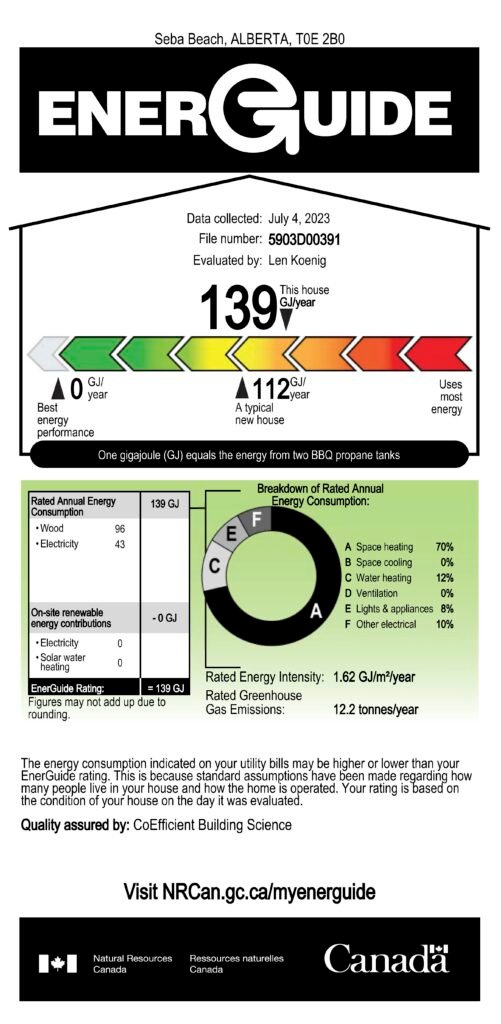

The EnerGuide Report
The EnerGuide rating came in at 139 gigajoules. Fully 70% of our energy was going into home heating and 12% for water heating.
Remember this is wood heating and a small electric hot water heater. We have no natural gas connection.
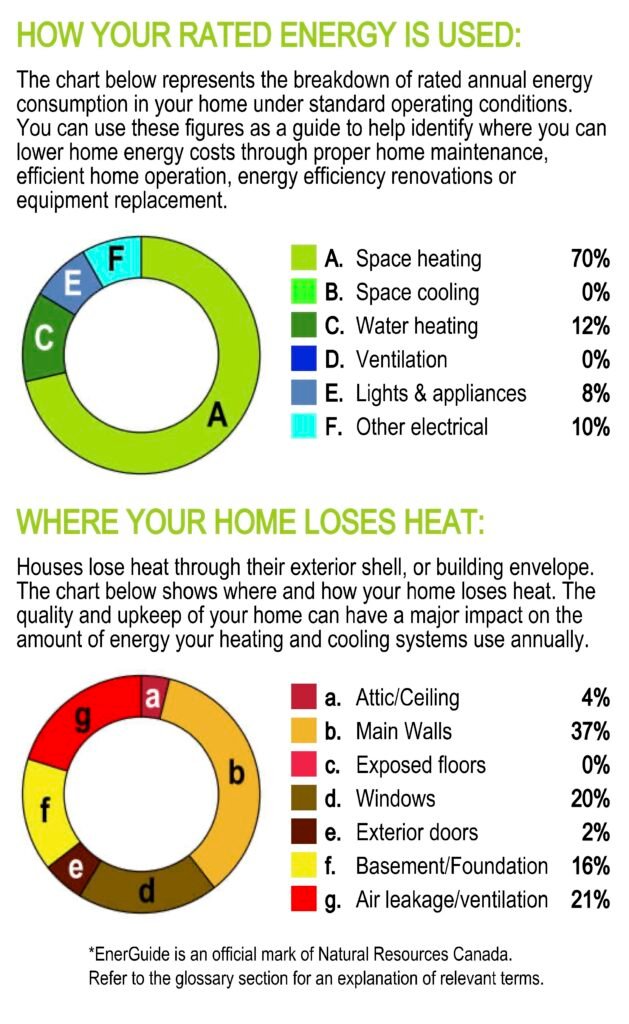
All of the data was then plugged into the HOT2000 model so you can determine how each component contributes to your home’s efficiency, or inefficiency as it turns out. And in the end, Len will produce an EnerGuide rating for your home which reports the home’s energy use in gigajoules.
As for where our home was losing heat our 2×4 walls with R12 insulation clocked in at 37% of our heat loss.
The next biggest loss is from our double-paned windows at 20%
Our crawl space was responsible for 16% of heat loss and air leakage another 21%.
EnerGuide reports come with recommended upgrades and no surprise here that the report suggested upgrading those five things.
The report also suggested we could then upgrade our heating system to an air-source heat pump and save 36 GJ/year.
We weren’t sure how long we would live at the cabin and we were constrained by budget, so we chose to do three of the five things.
As much as we would have loved to double down on our wall insulation and replace our windows, the budget would have been $50,000 to $75,000, or more.
So, we insulated, and air sealed the crawl space with R22 insulation.

Then, armed with Len’s dozens of infrared photos we used 10 tubes of caulking, 3 cans of spray foam insulation, and weather stripping to seal as many leaks as possible. This was a big job since I needed to remove the trim around the cathedral ceiling and baseboards to seal nearly all of the leaks Len found.
When Len did the post-renovation audit, the good news is we reduced air leakage by one full air change per hour to 3.75.
Thanks to the demand heat load calculations provided in the report we then set out to add a very energy-efficient air source heat pump.
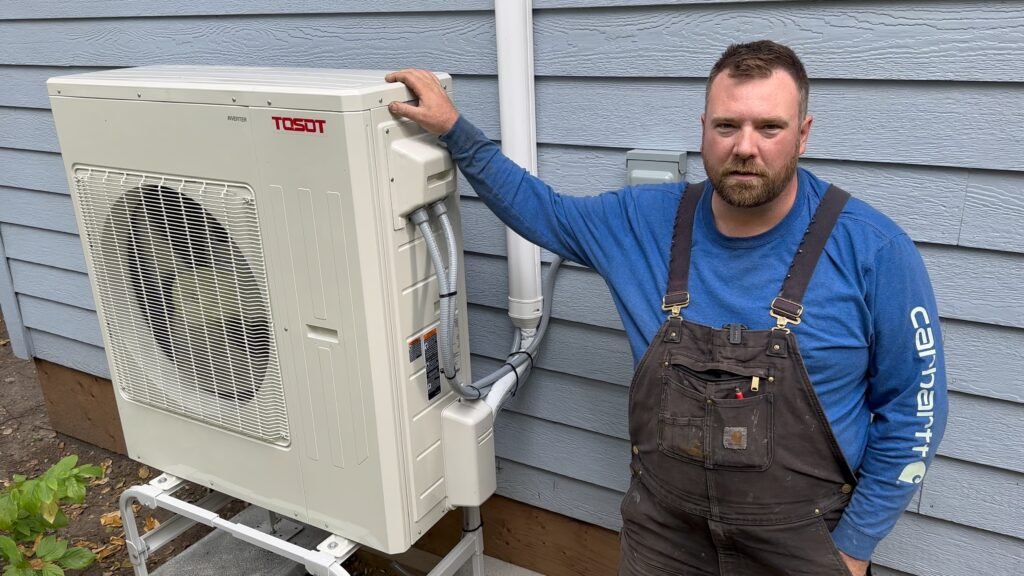
Installing a Heat Pump
We consulted with numerous net-zero home builders, heat pump experts and others before deciding to take the plunge with the heat pump.
We received contradictory advice that ranged from “Don’t do it” to “Heat pumps can do anything” to advice that falls in between these two extremes.
In the end, I consulted with a guy we met through Green Energy Futures who renovates homes to net-zero for a living. He suggested the Tosot Ultra Heat cold climate air-source heat.
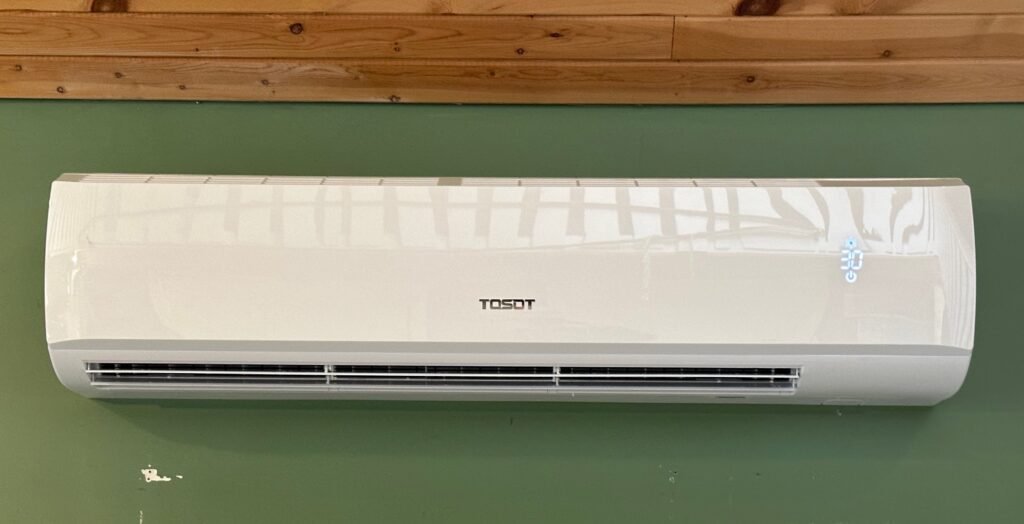
Once we checked out the cold climate heat pump we were able to determine that the heat pump with a 6,000-watt electric heater as backup was sufficient to meet our design heat load without the use of the wood stove – which was our goal.
Our guide also recommended an HVAC guy not far from us who specializes in heat pumps. Brett Boychuk owns SubZero Mechanical and their truck even has a huge heat pump painted on the side of it.
“This heat pump’s rated down to minus 35 for operation, for low ambient heat, which is hard to believe that you can still pull a heat out of the air at minus 35, but believe it or not, it’s doable,” he says.
Brett installed a mini-split system, which means there is a single outdoor unit that draws heat out of the air, even if it’s -35 Celsius.
And it has an indoor unit that is mounted on the wall near our wood stove. The unit is capable of outputting 36,000 BTU. The unit operates at peak efficiency down to -17 Celsius which frankly takes care of the vast majority of our winter.
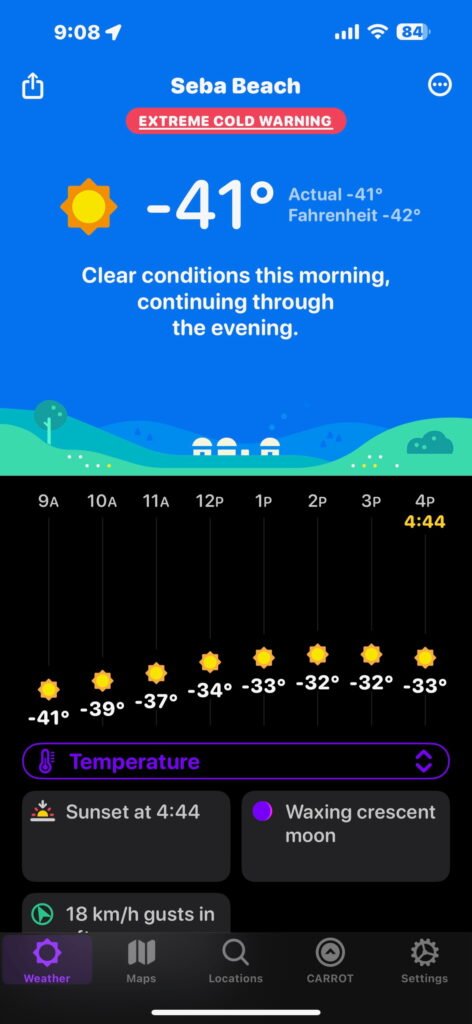
What about -41 Celsius?
It turns out last winter was one of the coldest I remember in my entire life.
On January 12 the temperature plunged to -41 Celsius and at 4 am I heard a strange sound in the cabin. I got out of bed and it was then our backup electric heater kicked in for the first time.
Together the heat pump and electric heater were able to keep the cabin warm.
I didn’t light a fire right away because I wanted to make sure the system would work. Once I was confident it did work, we lit a fire in our wood stove.
Last winter the supplementary electric heater came on about six times and this winter it has not come on at all. It very rarely goes below -35 C here.
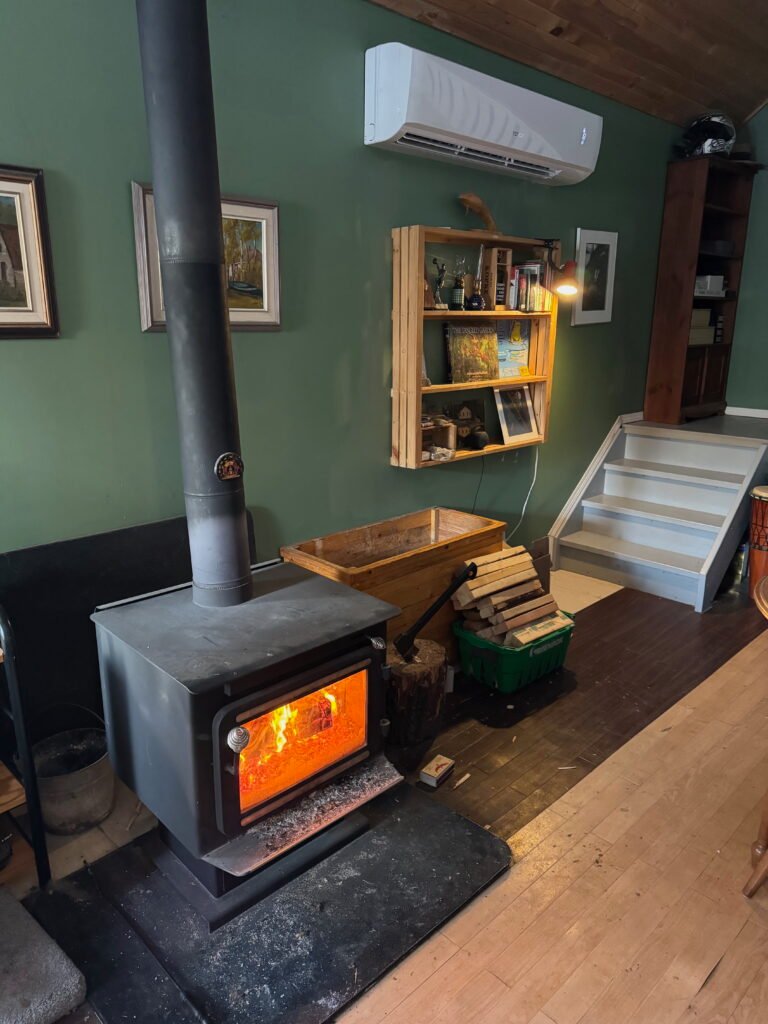
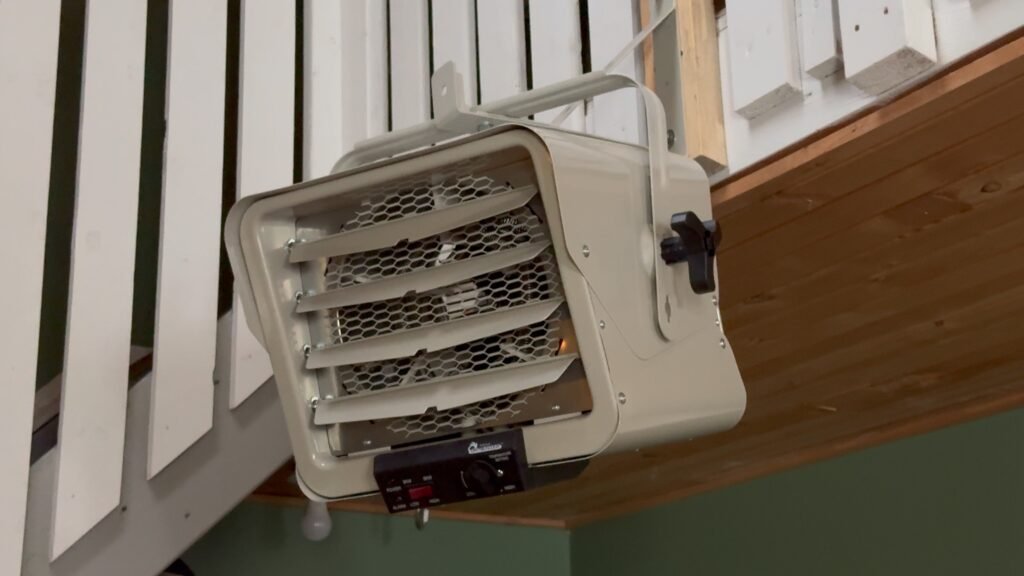
Energy Cost
I love data so we also installed an Emporia Energy Monitoring system so I could track how much energy was being used in the cabin throughout the year.
The heat pump used 3,965 kilowatt hours in one year which cost us $912.14. It costs us an additional $577 to charge our EV and PHEV vehicles. Our total electricity bill for the year was $2,758. And remember there is no gas bill.
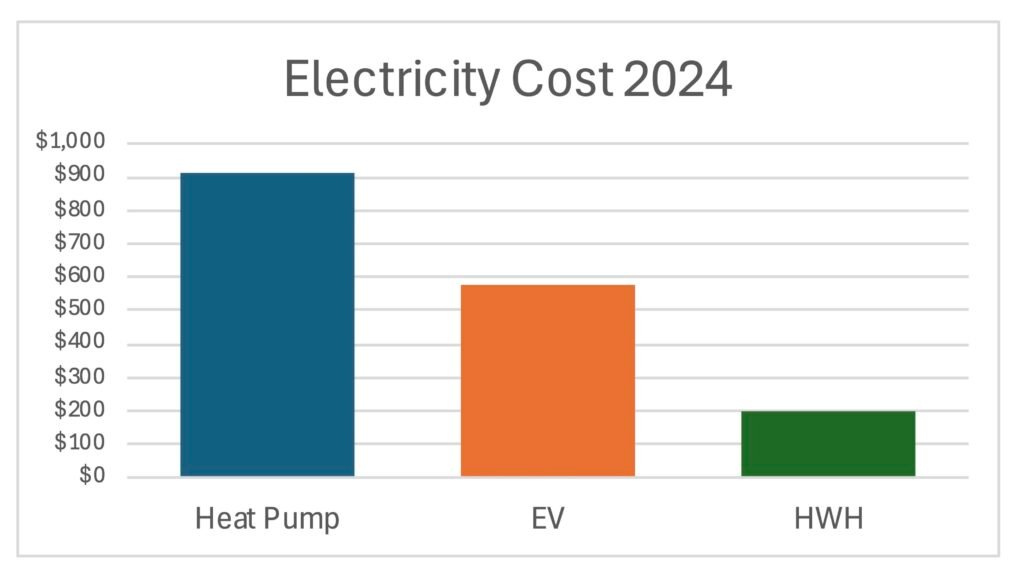
It’s important to note that the cost of running our air-source heat pump is offset by the wood we burn in our air-tight wood stove.
We burn wood because we love the ambience, and the radiant heat on cold winter mornings.
We light fires on the colder days of the year which as it turns out helps the heat pump when it is least efficient. The one cord of wood we now burn per year (compared to 5+ cords to heat by wood alone) may be offsetting energy used by the heat pump by as much as 50%. We compared energy use on a few days when we used the wood stove with days when we didn’t and the energy saved was quite striking.
Our cabin is also quite flexible in terms of the space we heat. We keep the doors closed in three rooms for most of the day, unless we are using the rooms which saves more energy.
And this raises our one caveat with the heat pump.
Heat Pump Caveats
The wood stove could heat the cabin by itself, and it seems to work very symbiotically with the heat pump. This is speculation, but it would probably cost twice as much for energy if we only used the heat pump. On the other hand that would still only add up to $1,800 for the entire year for heating and air conditioning.
The other thing we’ve learned is heat pumps are not like gas furnaces. Heat pumps don’t like constantly changing settings and most suppliers recommend you find the temperature you like and leave it there. Heat pumps are slow, very consistent sources of heat.
So, you probably shouldn’t be setting it back at night like you would do with a gas furnace. If you go away for a long period of time, however, you can set them back to 16 Celsius.
Retrofit Lessons
Remember the maxim “envelope first.” This is still a good idea. By improving your insulation and windows you will dramatically reduce the energy you need over the life of the home. It’s a good investment. We were uncertain about how long we would live in the cabin and so we compromised.
If this is your home and you are committed to the longer term then a more dramatic investment in dramatically increasing insulation and changing your windows would be an excellent investment.
We can feel cold air coming through our thin 2×4 walls on -41 days and comfort is dramatically improved when you beef up insulation and air tightness.
If we decide to stay in the cabin over the long term it may yet make sense to triple up the insulation in the walls and add triple-paned windows.
One downside will be that it’s possible that our heat pump would then be oversized, which is why the experts recommend doing insulation first.
Heat Pump Revolution
Nearly all of our friends and neighbours have been following our project and it has definitely generated interest among them. One neighbour is building a new house and thanks to all these learnings he is building a double-walled home that will be heated by a heat pump and he’s going to install solar on what will likely be a net-zero home.
We would have installed solar, but our beach community is well treed and solar is not feasible.
I am now more certain than ever that heat pumps are probably going to become the number one method of heating and cooling buildings in the world.
In 2022, 400,000 heat pumps were installed in the Nordic countries of Norway, Sweden and Finland alone. In 2024 heat pumps outsold gas furnaces in the U.S.
It’s a revolution in home heating for the simple reason that heat pumps, whether they are air-source or ground-source are better, more efficient systems that when powered with emissions-free energy can also be emissions-free.
We have done many stories on heat pumps, geoexchange and super energy-efficient homes. Check out our YouTube Channel for dozens of inspiring stories on people renovating and building net-zero homes.
